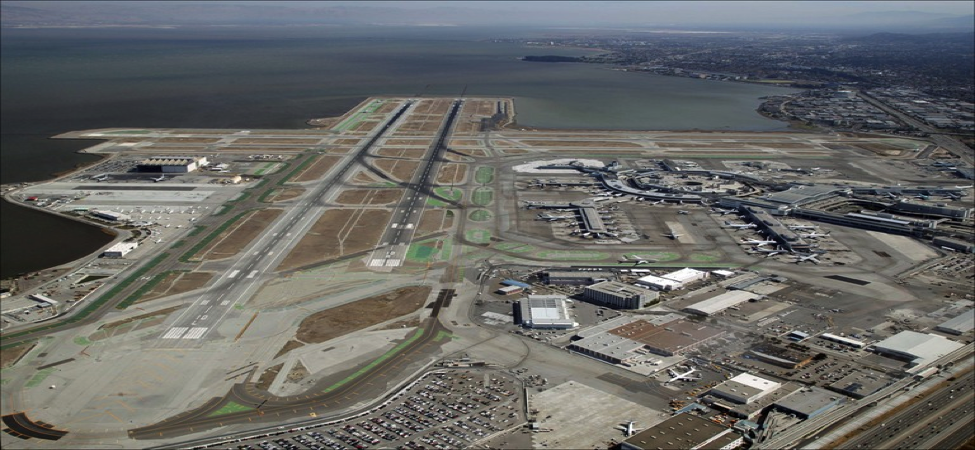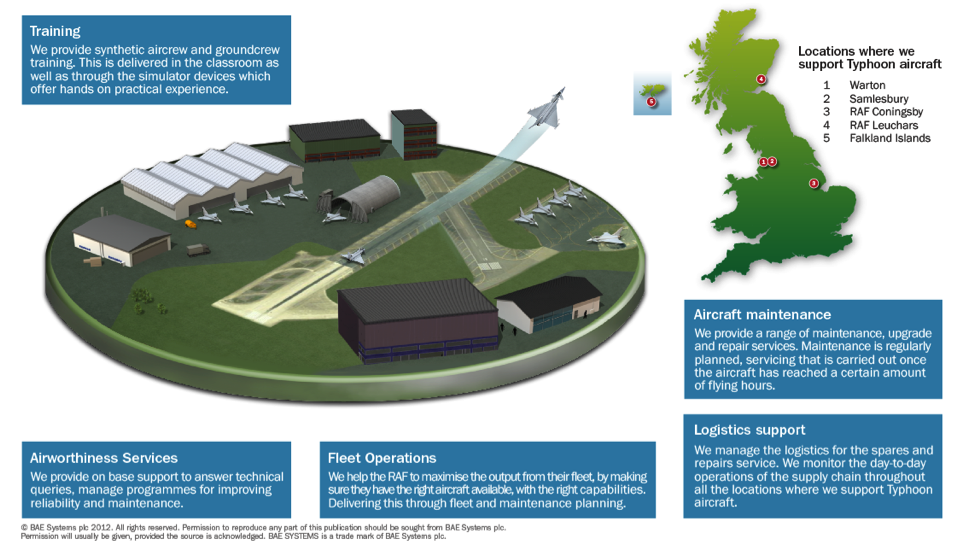
Figure 1. San Francisco International Airport
Source: http://www.mccullagh.org/db9/1ds-3/san-francisco-airport-sfo.jpg
 ENSE 622: Project Abstracts, Spring Semester, 2013
ENSE 622: Project Abstracts, Spring Semester, 2013
[ Project 1 ]:
Sensing Skin for Robotics
[ Project 2 ]:
Object-Based Model Development of a United States Airport System
[ Project 3 ]:
Robots Playing Soccer (RoboCup Middle Size League)
[ Project 4 ]:
A Commercial Distribution System of Railroad Vehicle Generated Power
[ Project 5 ]:
Modeling City Connectedness and Behavior with Hyper-Networks
[ Project 6 ]:
Using Systems Engineering Tools, Hypernetworks,
and Hypergraphs to Model and Analyze System Behavior in Baseball
[ Project 7 ]:
Autonomous Decentralized Traffic Management of High-Density Railway Systems
[ Project 8 ]:
System Level Design of Pedestrian Protection System for SUVs/Trucks
[ Project 9 ]:
Vibration Diagnostics System for Rotary MEMS
[ Project 10 ]:
The Home Depot Navigator (In-Store Mobile Application)
[ Project 11 ]:
Energy Harvesting System for Wireless Sensor Network (WSN)
[ Project 12 ]:
System-Level Design of an Enhanced Hybrid Battery/Ultracapacitor Energy Storage System
[ Project 13 ]:
Requirements Ontology
[ Project 14 ]:
System-Level Modeling of Secondary Wastewater Treatment Processes
[ Project 15 ]:
Integrating Component Prognostic Health Management (PHM) with Models of Logistics Systems
[ Project 16 ]:
Design of a Mass-Marketable Green Single-Person Vehicle
[ Project 17 ]:
Development and Visualization of Demand-Response Control
Strategies for Smart Building HVAC Systems through Executable Diagrams
[ Project 18 ]:
Platform for Personalized Heart-Failure Healthcare Using Body Sensor Networks
[ Project 19 ]:
Frugal Integration: Minimalism in Model Based Systems Engineering
Title: Sensing Skin for Robotics
Author: Pete Block
Abstract: The purpose of this project will be to develop suitable abstraction methods for modular skin placement on robots that allow for added sensational capability.
Background: While work has been made in the robotics field to improve means of interacting with humans, objects, and general sensing capability of a robot's environment, the ability to provide a similar material akin to human skin has still proved troublesome in two regards: Either the skin would be too expensive (e.g. silver and gold wiring) or required very large power supplies, making any sort of scale-up infeasible for desired full coverage of a humanoid robot or otherwise. By looking at conductive polymers as a cheaper solution as well as simple low powered microcontrollers combined to make a set of tactile pixels (taxels) the possibility of providing a cheap and scalable solution to robotic skins can be realized.
Project: This project will look at the modeling of conductive polymers to provide sensing capabilities and provide a way to model the system as well as develop simulations for element awareness and allow for orientation identification. This project will also look at modeling of the systems and physical simulation and allow for easy interfaces between chips and cpu as well as identify suitable interface for user/developer adjustment when scaling up.
Project Resources
Title: Object-Based Model Development of a United States Airport System
Authors: Peter Linnehan and Xenia Barnes
Abstract: According to the Federal Aviation Administration (FAA), air traffic growth is expected to rise by more than 90 percent in the next 20 years. To accommodate this demand, new technologies and aircraft are being developed and integrated into airports across the country. Some of the most visible new planes are the Airbus A380 and Boeing Dreamliner, which are classified as super heavy transport (SHT). These larger aircraft are envisioned in the FAA's Next Generation Air Transportation System (NextGen). NextGen is the FAA's solution for handling the demand for service as the aviation system advances by transforming the national air space system from ground-based radar to a satellite-based system. Although these SHT planes offer more capacity, more fuel-efficient engines, and other technological advances, the sheer size of the SHT planes stress the current United States aviation infrastructure. Since SHT planes demand more space to taxi and larger separation minimums to take off and land, as compared to the current narrow-body planes, they require surface operation adjustments at the airports they fly into. Since the adjustments vary between airports due to design and space limitations, a standardized approach to dealing with SHT planes does not exist.

Figure 1. San Francisco International Airport
Source: http://www.mccullagh.org/db9/1ds-3/san-francisco-airport-sfo.jpg
The purpose of this project is to develop an object-based development model of an airport in order to establish the relationships and interactions that arise when airports accommodate any aircraft to include SHT, or other, larger airplanes. This model will help demonstrate the potential issues caused by these airplanes on an airport-by-airport basis, thus allowing airport administrators to determine possible surface operational adjustments more easily.
Project Resources
Title: Robots Playing Soccer (RoboCup Middle Size League)
Authors: Lydia Mattern and John Gerdes
Abstract: RoboCup is a soccer league where teams composed of autonomous cooperative robots compete in dynamic adversarial environments. RoboCup is divided into five leagues of which we choose the Middle Size League. Teams of up to 6 robots, not exceeding 50cm in diameter, play with a regular size FIFA soccer ball. In this league, all sensors must be on-board, and robots may communicate with wireless networking. The research focus is on autonomy and cooperation at the planning and perception levels.
Development of a successful RoboCup team requires a concurrent approach to software and hardware development, with a particular focus on effective strategies of cooperative play. Proper implementation of desired strategies requires a detailed understanding of the system functionality. Therefore, we will attempt to develop a object-based system model of a middle-size RoboCup team as a framework for strategy development. With a detailed understanding of the hardware and software interactions, designers will be able to envision and implement desired modes of operation including offense and defense, goaltending, and techniques to overcome the obstacles in the field of play.
Project Resources
Title: A Commercial Distribution System of Railroad Vehicle Generated Power
Authors: Christopher Weay, Jr. and Troy Johnson
Abstract: As fuel costs increase and the debate over global warming continues, there are calls for increased energy efficiency, reduction of greenhouse gases, and more focus on the development of renewable energy technology. Each day millions of commuters travel by rail and several tons of freight are moved to manufacturing plants and retail stores across the United States by rail. With recent improvements in power electronics technology and the low maintenance cost of alternating current traction motors in rail vehicles, transit and railroad companies are purchasing more vehicles equipped with regenerative braking technology. Regenerative braking, converts rail vehicle kinetic energy to electric energy during braking. The most apparent benefit of regenerative braking to rail vehicle operators is the decrease cost of maintenance for mechanical brakes. However, another benefit of regenerative braking is the power that is generated during braking.

Figure 2. Regenerative braking system for railroad generated power.
This project will use a model-based system engineering approach to design a commercial distribution system for railroad vehicle generated power. The system will provide a source of revenue for rail operations when this generated power is captured, stored and sold to commercial electric power utility companies.
Project Resources
Title: Modeling City Connectedness and Behavior with Hyper-Networks
Authors: Alan Nguyen and James Vaughn
Abstract: The population of the world is expected to grow to over 10 billion people by 2050. This is causing cities to become larger and more complex, and can be thought of as large system of systems. There is an increasing need to model the inter-system behavior of these cities since failures in one system can cause cascading failures, leading to higher consequences than originally expected. The unpredicted cascading failures occurs because each system was designed independently and analysis was never performed on how each system would affect one another.
The purpose of this project is to explore the use of hyper-networks to model the behavior and connectedness of the various systems of a city. The model will help identify which systems are susceptible to failure, and the effects of the failure throughout the entire system.
Project Resources
Title: Using Systems Engineering Tools, Hypernetworks,
and Hypergraphs to Model and Analyze System Behavior in Baseball
Authors: Calvin Brien and Amber Tucker
Abstract: What system is more complex than a sport? Technological developments, changing rules and regulations, and the increased incentives for winning games have all added even further complexity to the already intricate game of baseball. As a result, each component and its interfaces with other components within this complex system have also become more complex.
We will develop models to describe the game of baseball using systems engineering terms and concepts. Furthermore, in order to better model and understand system behavior, it is useful for one to use hypernetworks and hypergraphs. These techniques can be powerful tools to explain how various system components within a complex system are related to and interact with each other. We will explore how to apply these techniques to accomplish that with respect to our system and use them to draw conclusions based on these analyses. Our end goal will be to formulate system requirements that may lead to improvements in the rules and/or operations of the game of baseball today.
Project Resources
Title: Autonomous Decentralized Traffic Management of High-Density Railway Systems
Authors: Ruiqi Mu
Abstract: A centralized traffic control (CTC) system is a railway signal control system that consolidates train routing decisions that were previously carried out by local signal operators or the train crews. With established CTC, trains move by signal indication instead of by time-table and man's order. A centralized dispatcher process needs to be constantly aware of the position of each train as electrically reported -- it will control the switches and signals remotely. Unfortunately, conventional CTC functions are significantly limited by transmission speed of the network -- this can become a problem especially in high density traffic lines. The new generation CTC system, Autonomous Decentralized Traffic Management System (AD-TM) system has solved this problem.
In this project, we will use a systems engineering approach to demonstrate how an ADTM (CTC) system works. I may choose a signal railway line as an example.
Project Resources
Title: System Level Design of Pedestrian Protection System for SUVs/Trucks
Authors: Yuyao He
Background: Car manufacturers are paying more attention to pedestrian safety than ever before. As a case in point, Volvo, as the leader of vehicle safety, introduced its V40 in 2012 which is known as the first production car equiped with pedestrian airbags. Together with its pedestrian detection system and auto brake system, the V40 has achieved a new level of pedestrian protection

Figure 3. Pedestrian protection system.
Abstract: SUVs and trucks have relatively poor maneuverability due to their high ground clearance and weight. Therefore, compared with sedans and hatchbacks, they have a higher chance of crashing into pedestrians. Once a crash happens, as a result of the SUV and/or truck's high and non-streamlined front end, a pedestrian absorbs considerably more impact energy. The consequences are horrible: at a relatively low speed, the pedestrian may fall onto the ground (then be run over)/engine hood. At relatively high speed, the pedestrian may be blasted away.
This project will be a system of systems level design of pedestrian protection system for SUVs and trucks. In this system, subsystems like pedestrian detection system, auto brake system and pedestrian airbag system will work together in order to mitigate the damage to pedestrians when crashes happen.
Project Resources
Title: Vibration Diagnostics System for Rotary MEMS
Author: Jeremy Feldman
Abstract: The purpose of this project will be to analyze the systems engineering approach in rotary micro-electromechanical systems (MEMS) for ontology-enabled system realization. See Figure 4.

Figure 4. Rotary MEMS Device [2,4]
MEMS is a relatively new domain of systems engineering which has spread rapidly from a high technology research field to a field that is in high demand, rapidly growing, and industry driven. The approach of the typical MEMS designer is commonly a highly inadequate systems engineering approach, as most MEMS designers are electrical engineers and do not follow a systems-driven approach to design and realization of these highly complex and highly impactful systems.
Project Resources
Title: The Home Depot Navigator (In-Store Mobile Application)
Authors: Premalatha Ramadurai and Baozhu Zhang
Abstract: The Home Depot is an American retailer of home improvement and construction products and services. With about 40,000 items in its stores, finding them within the store is a common complaint by the customers [1]. The proposed smart phone application works as an in-store navigator, which provides customers the most convenient way to locate an item within the store.


Figure 5. Schematic for Home Depot product search app.
The application works like a regular GPS system, where the user inputs the name of the products or any key word related to the product, instead of a physical address. The instant search facility provides suggestions for related products just when the user types. Once the user has confirmed their product and hit the search button, the application recognizes the product being searched, calculates the distance from the user's current location, and notifies the customers where the product is located. The application then navigates the customer to the product location, including the shelf number. The application also provides alternative routes to reach for the products.
Thus, this smart phone application will help customers locate items more quickly and easily, thereby helps customers shop more efficiently and, as a result, they choose the Home Depot over competitors. The proposed mobile application allows customers to save time and complete their shopping in a more convenient way. Retailers on the other hand can improve their sales and enhance customer satisfaction.
Project Resources
Title: Energy Harvesting System for Wireless Sensor Network (WSN)
Authors: Chao Wang
Abstract: .... The wireless sensor network (WSN) has become a prominent area of system research and is enjoying broad application in pervasive computing, location tracking, and health monitoring of medical patients and commercial buildings [1-2].
A WSN is composed of sensor nodes which are usually powered by batteries. However, batteries all have a limited lifetime. They have to be replaced periodically or recharged. But replacing all the batteries of a whole network doesn't seem reasonable in most cases. First, the maintenance costs are too high when the number of nodes is very large. Second, for those hazardous environments and hard to service areas, it might be impractical to access the nodes without compromising the system performance. Third, battery disposal raises environmental concerns.
Energy harvesting is a promising solution to supply sustainable energy to sensor nodes without the usage of batteries. It is a process by which the ambient energy present in the environment is captured and converted to electrical energy to power electronic devices. Major ambient sources for energy harvesting include solar energy, radio frequency (RF) energy, thermal energy, kinetic energy and electromagnetic radiation.
Here, we propose an energy harvesting system powering the WSN by utilizing virtually inexhaustible ambient energy sources of power with little negative environmental effects and enabling zero or minimal future maintenance.
Project Resources
Title: System-Level Design of an Enhanced Hybrid Battery/Ultracapacitor Energy Storage System
Author: Junyi Shen
Abstract: Efficient energy storage and power conversion are critical for all types of electrified transportation, including electric vehicles, hybrid electric vehicles, plug-in hybrid electric vehicles (EVs, HEVs, and PHEVs) as well as heavy-duty, rail, and off-road vehicles, airplanes and ships. High energy density Li-ion batteries are inadequate to meet the target of delivering high pulse power. Therefore, the energy storage system is tailored and oversized to meet the high power demand. With exceptional power density, ultracapacitors(UCs) can absorb and release high energy virtually instantaneously. Hybridization of Li-ion batteries and UCs is investigated in depth as one approach to satisfy the increasingly demanding vehicular energy and power storage need.
UCs are well-known for their extremely high power density, stable power performance over broad temperature range, high cycle life and cycling efficiency, which are complementary to Li-ion batteries. Therefore, their hybridization creates a high-power / high-energy source. This approach not only reduces the size of the energy storage system(ESS) due to decrement in the battery power demand but also reliefs the thermal burden on batteries as instantaneous peak power demands are supplied by the UCs. By means of buffering and protecting batteries from undue current, voltage and power stress, it contributes significantly to prolong battery lifetime. Unlike batteries, UCs do not have limitations such as charge acceptance rate restriction as they store the energy in the electrical field, which enables them to better capture the emerging high power regenerative braking energy as well as improving the response time of the system to the driver’s commands. Based on the preliminary analysis, the enhanced ESS offers doubled power density for the same weight, or significant size reduction for the same power density when hybridized with a promising high energy density battery.
Active combination and appropriate energy management of the hybridized ESS determines the ideal power distribution between UCs and batteries. This offers opportunity for optimization with trade-off on Li-ion battery lifetime and ESS size/weight. In this project, a comprehensive system-level battery/ultracapacitor and power electronics interface model will be constructed. A state-of-life estimator will be implemented as well. Different energy management controller algorithms such as Discrete Wavelet Transform(DWT) will be employed to investigate the trade-off among battery lifetime/total ESS size/weight
Project Resources
Title: Requirements Ontology
Authors: Andres Arellano
Abstract: This project will focus on developing a RDF ontology to specify design requirements. The ontology will be processed, read and written using Apache Jena, a Java framework for building Semantic Web applications. Demos will be produced using the rule-based inference engine provided by the same framework.
As an exploratory branch of the project, the same goal described above will be attempted using a dynamic programming language, possibly Ruby.
Project Resources
Title: System-Level Modeling of Secondary Wastewater Treatment Processes
Authors: David O'Brien and Chiedo Ohanyerenwa
Abstract: The purpose of wastewater treatment is to allow wastewater to be treated and disposed of in a manner that is not dangerous to human health or the ecosystem. Most wastewater management systems contain three or more treatment processes. Preliminary treatment is a physical process that is responsible for the removal of coarse solids. Primary treatment is also a physical process that is responsible for the removal of settleable organic and inorganic solids through sedimentation. Secondary treatment uses aerobic and anoxic biological treatment methods to further remove organic matter. Tertiary treatment is used only when specific compounds cannot be removed by secondary treatment methods.
Biochemical oxygen demand or BOD is the amount of dissolved oxygen needed by aerobic biological organisms in a body of water to break down organic material. Most natural waters contain small quantities of organic compounds rich in nitrogen and phosphorus. Aquatic microorganisms use dissolved oxygen to convert these organic compounds into food for energy and growth in a process called microbial metabolism. Under some circumstances, microbial metabolism can consume dissolved oxygen faster than atmospheric oxygen can be dissolved into the water or produced by algae and other autotrophic organisms. Fish and other aquatic animals that use dissolved oxygen may die when too much oxygen is depleted by microbial metabolism.
The purpose of this project will be to create a system-level representation of the secondary treatment processes and its interrelated relationships and interactions that have a combined effect of decreasing biochemical oxygen demand and nitrogen in treated effluent. This model will demonstrate the system behavior and potential design trade-offs necessary to meet effluent requirements for different influent wastewater characteristics.
Project Resources
Title: Integrating Component Prognostic Health Management (PHM) with Models of Logistics Systems
Authors: Amir Kashani and Jacob Moschler
Background: Logistics systems such as Amazon.com's automated supply chain system and aircraft support systems of military contractors will benefit from more accurate models of system behavior. Current supply chain software monitors spare parts inventory and shipment of parts but system support functions such as maintenance planning and prediction of down time is largely left to human users. With the shift to performance-based contracts, models for the behavior of integrated logistics systems as a whole are needed to predict availability and service levels based on a set of contract requirements before a system is created.

Figure 6. Logistics for aircraft support systems for military contractors.
Abstract: The purpose of this project is to explore PHM applications in models of logistics systems. Platform support systems (such as aerospace maintenance networks) will be modeled to include PHM of various system components. Methods will be developed to determine which model parameters and mechanisms have the strongest effects on system behavior. One goal will be to create a standard method for evaluating logistics models so as to determine where to apply PHM. Recommendations will be made on how to improve current logistics systems in ways that will increase platform availability while keeping support costs low.
Project Resources
Title: Design of a Mass-Marketable Green Single-Person Vehicle
Author: Travis Chezick
Abstract: A large portion of the carbon footprint for individuals in the industrialized world is in transportation, especially in America where various cultural influences have led to a greatly increased use of personal transportation across longer distances than other countries. The mass-market success of the Toyota Prius indicates that there is clearly a market for efficient vehicles, yet a high-performance motorcycle achieves roughly the same gas mileages at a fraction of the price. A small scooter yields far better gas mileage at a small fraction of the cost of a Prius, yet neither the scooter nor the motorcycle have gained mass-market acceptance in the United States.
While investigating the use of motorcycles and scooters for daily use, we find that most entries in the field fall distinctly into one of the two categories, each with their drawbacks. Scooters tend to be light and easy to handle with a short learning curve, but generally lack the speed to travel on major roadways. Motorcycles require additional licensing and tend to be intimidating to many users. Finally, both systems are undesirable in poor weather as it leaves the user exposed to the elements.
The goal of this project will be to design a new hybridization of the car, motorcycle, and scooter, to achieve a single-person vehicle which would appeal to the typical American commuter. The design will be driven by purchase cost, operations cost, safety, and personal comfort.
Project Resources
Title: Development and Visualization of Demand-Response Control
Strategies for Smart Building HVAC Systems through Executable Diagrams
Author: David Daily
Abstract: Demand-Response (DR) is a customer-side, electrical load balancing technique that will become more available and effective with the implementation of the Smart Grid. DR techniques can include the shifting and shedding of electrical loads or schedule changes for HVAC equipment in order to reduce peak energy consumption. Each building manager has a unique set of loads and technologies available to achieve DR, but the implementation of control strategies in response to electrical events can be cumbersome. Different proprietary technologies within the HVAC system make centralized control difficult for DR.
I plan on easing this process of developing control strategies through use of SysML diagrams to model structure and behavior of the HVAC system given the current state of the electrical grid (i.e., normal, emergency, peak-reduction). This diagram can be functional as well through a variety of methods. I plan on using the ModelicaML tool to translate the diagrams into an executable Modelica model where the designed control strategies can be tested through the use of Modelica Building Library Package models.
Project Resources
Title: Platform for Personalized Heart-Failure Healthcare Using Body Sensor Networks
Authors: Mehdi Dadfarnia
Abstract: Personalized healthcare has been a pursuit that many are working towards in the medical field for quite a few years now. Physicians currently diagnose patients based on a snapshot of time (when the patients come to see them, and after a few test results). Acquiring and analyzing data through a longer time interval will allow physicians to diagnose patients on a more robust, individualized basis. Fortunately, there are emerging technologies that will enable physicians with this capability. Done correctly, body sensor networks will enable physicians to gather up more data about a patient's for a large time interval, and will result in better patient care. Furthermore, some data has the potential to notify the physician and/or patient about a near-future calamity or health condition that may strike them, such as a stroke.

Figure 7. Body-area sensor network hierarchy.
In this paper, I will investigate a platform that uses body area sensor networks to provide physicians and their patients with a more personalized health care, particularly for heart failures. Design issues with body area sensor networks will be discussed, along with future usages.
Project Resources
Title: Frugal Integration: Minimalism in Model Based Systems Engineering
Author: Casey Smith >
Abstract: Cost is one of the quintessential parameters for optimization and tradeoff analysis in systems engineering. But there are some contexts in which cost is such a dominant driver of design that the engineering processes themselves must be adapted. At the scale of a single product this has come to be known as frugal innovation or frugal engineering, where novel approaches are taken to reduce existing technologies to their barest essentials in order to make ultra-low-cost alternatives available to underserved populations (Sehgal, Kevil, & Ganesh, 2010). One example of this is the Tata Nano, marketed in India as the lowest cost production car in the world (Spiegel Online International, 2008). Through revolutionary rather than incremental feature minimalism the car is so light it only needs a two cylinder engine and no power steering the Nano reaches a price tag of approximately $2000. The same principles can hold as systems scale up, with the DARPA ALASA project being a prime example. The revolutionary design choice in this case is to dispense with a fixed spaceport and launch satellites from aircraft in flight, with the goal of reducing the single mission cost to $1 million for a 100 pound satellite launched into low earth orbit a threefold cost reduction from conventional approaches (Defense Advanced Research Projects Agency, 2011). The ability to reach this price point is still uncertain, and will depend on systems engineers' ability to leverage their portfolio of tools and methodologies in new and untested ways.
This research project aims to explore some novel methods that could conceivably be employed by engineers attempting frugal integration of large scale systems. Emphasis will be placed on case studies of unique insights that have led to frugal solutions, and how such insights can be internalized to MBSE techniques. The Nano hints at extending functionality tradeoff analysis to feature minimization. ALASA hints at moving beyond risk analysis and reliability engineering to radical risk avoidance strategies (the most costly risk of traditional space launch is that the weather doesn’t cooperate), and simulation based approaches to assessing average case performance and fault tolerance in an environment where cost containment demands a greater appetite for potential failures. These and several other techniques will be investigated.
Project Resources
Last Modified: April 2, 2013.
Copyright © 2013, Institute for Systems Research, University of Maryland